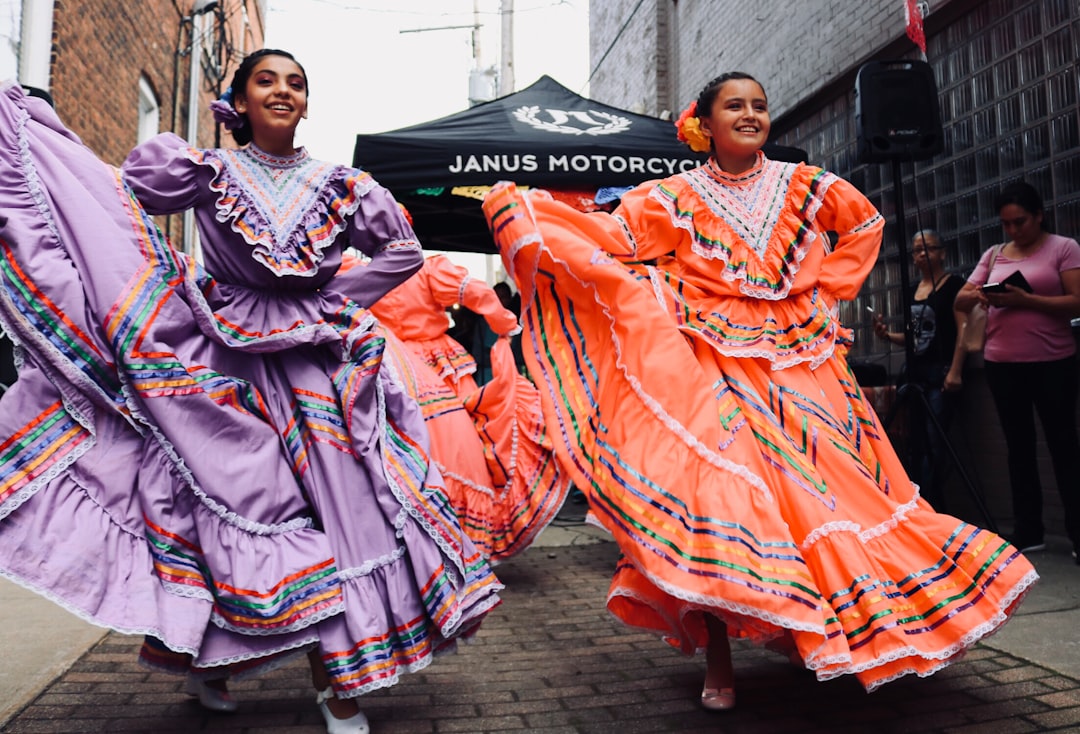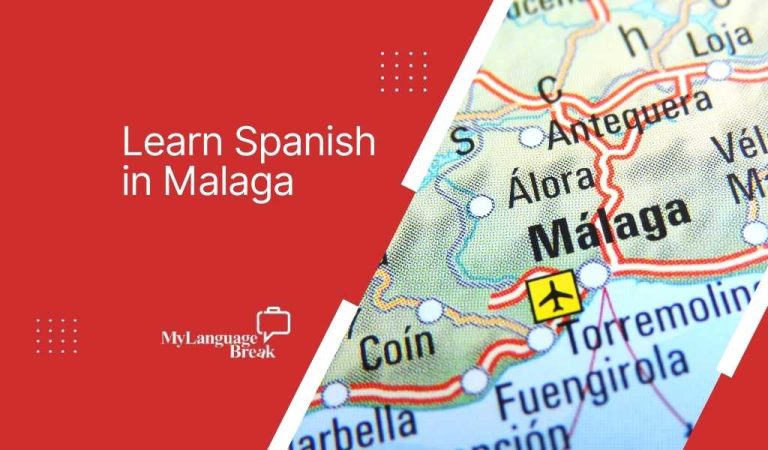Unraveling the World of Spanish-Speaking Countries and Their Linguistic Impact
Overview of countries where Spanish is globally spoken across the world.
Spanish, a language born in the Iberian Peninsula, has spanned continents, weaving itself into the fabric of numerous nations. Today, it’s the official language in 21 countries, with millions of native speakers globally. From the bustling streets of Mexico City to the tranquil beaches of Costa Rica, the Spanish language unites people, cultures, and histories. It’s more than just a means of communication; it’s a cultural heritage that tells the story of conquests, colonies, and resilience.
Fasten your seatbelt, amigos! Get ready for an exciting adventure through the vibrant and fiery world that speaks the Spanish dialect. Hold onto your sombreros, because things are about to get muy interesante!
A language spoken in 21 countries across Latin America and Central America, making it the largest in terms of speakers. Learning this language can be advantageous as it is widely spoken and understood.
Our first stop is Spain, the birthplace of the language and the land of flamenco, paella, and siestas. With its stunning architecture, vibrant festivals, and irresistible tapas, this European gem captivates visitors.
Don’t miss strolling along La Rambla in Barcelona or marveling at masterpieces in Madrid’s Prado Museum. Olé!
Next, we’re heading to the magical land of Mexico. Indulge in mouthwatering tacos, spicy salsas, and iconic piñatas. Explore the ancient ruins of Chichén Itzá or get lost in the labyrinthine canals of Xochimilco. Mexico will enchant you. And who can resist margaritas on Cancun’s pristine beaches? Arriba, Mexico!
Continuing our adventure, we arrive in the colorful paradise of Colombia. From the buzzing streets of Bogotá to the breathtaking beauty of Tayrona National Park, this South American gem offers an unparalleled experience. Indulge in arepas, dance to the hypnotic rhythm of salsa, and immerse yourself in vibrant street art. Viva Colombia!
Now, let’s salsa our way to the Caribbean island of Cuba. Be swept off your feet by the sultry sounds of Buena Vista Social Club and let Havana’s rhythm guide your every move. Explore the vintage charm of American cars, puff on a smooth Cuban cigar, and savor every sip of a refreshing mojito. ¡Viva la revolución, Cuba!
Last but not least, we make our way to the beautiful shores of Argentina. Tango through vibrant neighborhoods of Buenos Aires, savor mouthwatering Argentine steak and lose yourself in the enchanting landscapes of Patagonia. Don’t forget to cheer loudly at a soccer match and marvel at Jorge Luis Borges’ poetry. ¡Vamos Argentina!
And there you have it, folks, a whirlwind tour of fascinating destinations where Spanish is globally spoken. Whether you’re craving tapas, salsa dancing, or immersing yourself in vibrant culture, the Spanish-speaking world has got you covered. Pack your bags, brush up on the language, and prepare for the adventure of a lifetime.
Discover the vibrant tapestry of countries where the language thrives as an official means of communication. Immerse yourself in the rich history, diverse cultures, and global impact of one of the most spoken languages worldwide.
Countries in the World: The Prevalence of Spanish all over the Globe
According to the Instituto Cervantes, there are over 460 million native speakers of Spanish worldwide, making it the second most natively spoken language after Mandarin Chinese. But its influence doesn’t stop there. When considering the number of people who speak it as a second language, the total number of speakers rises to more than 580 million.
Not only is Spanish globally used in its official countries, but it also has a significant presence in the United States. The United States has the second-highest number of people who speak Spanish worldwide, with over 41 million native speakers and 11.6 million bilingual individuals.
Table 1: Top 5 Countries with the Highest Number of Spanish Speakers
| Country | Number of Spanish speakers |
|---|---|
| Mexico | 125 million |
| USA | 41 million |
| Colombia | 50 million |
| Spain | 47 million |
| Argentina | 45 million |
These figures highlight the global prevalence of Spanish and its significant role in international communication.
Cultural Diversity in Spain – What to Expect
When it comes to cultural diversity, Spain is like a treasure trove waiting to be discovered. From the lively streets of Barcelona to the majestic palaces of Madrid, this country is a melting pot of different cultures and traditions.
And let me tell you, it’s not your average melting pot. It’s more like a potluck dinner where everyone brings a unique dish to share.
When it comes to cultural diversity, Spain is like a treasure trove waiting to be discovered. Many people speak Spanish, making it one of the most embraced languages globally. Not only is Spain itself a country where the language is widely used, but there are also 20 other countries worldwide where this language is spoken.
First things first, let’s talk about the language. It is important to note that Spanish is not an official language in all of these countries, but it holds significance due to the history of Spanish rule and Spanish colonies. Many parts of the world, including countries in Central and South America, as well as the Philippines, which were once under Spanish rule, use the Spanish language.
Now, let’s move on to the food. Spanish cuisine is influenced by diverse countries, resulting in a wide variety of dishes to try. Each region has its specialties, ranging from paella and tapas to hearty stews and fresh seafood. And let’s not forget about Jamón ibérico, a type of cured ham that is famous worldwide. If you’re a foodie, countries with Spanish cuisine should be on your list.
But it’s not just the language and the food that make these countries culturally diverse. The architecture also reflects the rich history and different influences. From the Moorish architecture in Andalusia to the Gothic masterpieces in Barcelona, each country in the Spanish-speaking world has its unique architectural wonders.
And of course, let’s not forget about the people. Spaniards and Spanish speakers around the world are known for their warm and welcoming nature.
Not only is Spanish spoken as a first language by millions of native speakers, but it is also commonly spoken as a second language. This adds to the lively and energetic atmosphere in regions with widespread use of Spanish.
So, when you visit Spain or any country where the language is commonly used, be prepared to be amazed by the cultural diversity. From the languages to the food, the architecture to the people, these countries have it all.
It’s a place where diverse cultures and traditions coexist, creating a vibrant and dynamic atmosphere that will leave you wanting more. So, pack your bags and get ready to broaden your horizons in the world of different languages.
Breakdown of Countries that embraces Spanish
Spanish is the official language in many countries, mainly in Latin America and Central America, boasting a rich history and cultural diversity. These countries include Argentina, Bolivia, Chile, Colombia, Costa Rica, Cuba, Dominican Republic, Ecuador, El Salvador, Equatorial Guinea, Guatemala, Honduras, Mexico, Nicaragua, Panama, Paraguay, Peru, Puerto Rico, Spain, Uruguay, and Venezuela.
Each of these countries has its own unique culture, history, and dialect of Spanish. For instance, Argentinian Spanish was heavily influenced by Italians due to large-scale Italian immigration in the late 19th and early 20th centuries. On the other hand, Mexican Spanish is influenced by the indigenous Nahuatl language, lending it a distinct vocabulary.
The Spanish language extends beyond numerous countries. It is widely spoken in the United States, Belize, Andorra, Gibraltar, and the Philippines, among other places, despite not being the official language.
Fun Fact: Equatorial Guinea is the smallest nation with a significant Spanish-speaking population, with around 1.4 million people.
The Influence of Spanish on Other Languages
The influence of the Spanish language extends far beyond the borders of the countries where it is spoken. Its rich vocabulary and structure have seeped into other languages around the world, leaving a lasting impact.
For instance, the English language has borrowed numerous words from Spanish. Words like ‘patio’, ‘plaza’, ‘canyon’, ‘rodeo’, ‘taco’, and ‘guacamole’ are now commonplace in English-speaking countries. These borrowings reflect the cultural exchanges between Spanish and English speakers over the centuries.
Spanish has also influenced Tagalog, the national language of the Philippines, due to Spain’s colonial history in the country. Many Tagalog words, particularly those related to religion, law, and everyday objects, are derived from Spanish.

Even languages like Japanese and Korean have absorbed Spanish loanwords, primarily through the mediums of food and culture. Words like ‘tomato’ (from Spanish ‘tomate’) and ‘paprika’ (from Spanish ‘pimiento’) are used in these languages.
In the United States, a unique blend of English and Spanish known as ‘Spanglish’ has emerged, particularly in regions with large Hispanic populations. This language hybrid illustrates the dynamic nature of language and its ability to evolve and adapt to its surroundings.
The History of the Spanish Language
The Spanish language, known as Castilian in its early stages, has a rich and complex history. It originated in the Iberian Peninsula as a dialect of spoken Latin, which today is often referred to as “Vulgar Latin”, differentiating it from the Classical Latin used in writing and formal contexts.
The earliest Latin texts with traces of Spanish come from mid-northern Iberia in the 9th century. The language evolved over centuries, influenced by the various groups that lived in or conquered Spain, including the Celts, Visigoths, Moors, and Romans.
In the late 15th century, a significant event shaped the future of the Spanish language. The kingdoms of Castile and Leon merged with that of Aragon, and Castilian became the official language of all of Spain. This unified language began to spread beyond the Iberian Peninsula, thanks to explorers, conquerors, and colonizers.
Common Traditions in Countries Speaking Spanish
When it comes to traditions, countries with a Spanish heritage know how to spice things up! These vibrant and lively nations have a plethora of cultural customs that are guaranteed to make your head spin.
So put on your flamenco shoes and get ready to salsa your way through this colorful adventure.
Let’s start by talking about La Tomatina, the world-famous tomato fight that takes place in Buñol, Spain.
Picture this: thousands of people packed into tiny streets, all armed with ripe tomatoes, and ready to turn the town into a soupy mess. It’s like a food fight on steroids! And don’t worry, the locals have got it all figured out.
They lay down plastic covers on the buildings to protect them from the flying red projectiles. Talk about a fun way to blow off some steam and get rid of excess produce!
Let’s head south to Mexico, where Day of the Dead celebrations reach a whole new level. It’s not your average Halloween party, my friends. Mexicans honor their deceased loved ones and celebrate their lives for two days.
Colorful altars are adorned with marigolds, photos, and their favorite food and drinks. It’s like a vibrant picnic to welcome the spirits! And don’t forget the intricately decorated sugar skulls. Who knew death could be so sweet?
If you’re looking for a different kind of thrill, head over to Ecuador for the annual Running of the Bulls. Yes, my brave friends, inspired by the famous event in Pamplona, Ecuadorians take to the streets to test their agility and bravery.
But here’s the twist – instead of bulls, they use costumed men on stilts! It’s like a carnival on stilts, with people sprinting for their lives. Now that’s what I call combining tradition with a touch of whimsy!
And speaking of whimsy, let’s not forget about Carnival in Brazil. This is the ultimate party to end all parties. Brazilians know how to have a good time, and Carnival is proof of that. From colorful parades with extravagant floats to the mesmerizing samba dancers, this celebration is out of this world.
It’s a time to let loose, dance like nobody’s watching, and embrace the joy of life. Just make sure you have your sequin-covered outfit and a lot of stamina to keep up with the non-stop party vibes!
So there you have it, a glimpse into the wild and wonderful world of traditions in countries where the Spanish language prevails. From food fights to stilt-walking bulls, and sugar skulls to samba dancers, these nations know how to keep things interesting.
So grab your passport, pack your sense of adventure, and get ready to dive headfirst into a whirlwind of color, music, and laughter. The fiesta awaits!
Learning Spanish: A Doorway to Multiple Cultures
Learning Spanish opens up a world of opportunities. As one of the most widely spoken languages globally, Spanish provides access to a multitude of cultures, histories, and literary traditions. It’s not just about learning a language; it’s about understanding and appreciating a rich tapestry of cultures that spans continents.
Whether it’s immersing oneself in the magical realism of Gabriel Garcia Marquez’s novels, understanding the political history of Latin America, appreciating the flamenco music of Spain, or simply communicating with Spanish speakers in their native language, learning Spanish enriches one’s worldview and personal experiences.

The Influence of Spanish on Global Communication
Spanish’s influence extends far beyond its native speakers. As one of the official languages of international organizations like the United Nations and the European Union, Spanish plays a crucial role in global communication and diplomacy.
Furthermore, with the rise of globalization and digital communication, Spanish has become an essential language in the business world. Understanding Spanish can open doors to international trade and business opportunities, particularly in rapidly growing Latin American markets.
In the realm of arts and culture, Spanish-language films, music, and literature have gained global recognition, further enhancing the language’s influence and reach.
Cuisine in Countries that Speak Spanish – A Gourmet’s Guide
If you’re a self-proclaimed foodie seeking your next culinary adventure, look no further than the cuisine of countries where the mother tongue is Spanish. Get ready to embark on a gastronomic journey like no other!
From tangy ceviche in Peru to hearty paella in Spain, these countries have a whole array of delectable dishes that will leave your taste buds tingling and your stomach grumbling for more. The best part?
You don’t even need to leave your couch to indulge in these mouthwatering treats. Yes, that’s right – you can become a connoisseur of Spanish cuisine right in the comfort of your own home.
Let’s start with the classics, shall we? In Spain, paella is a must-try dish. This saffron-infused rice dish is a symbol of Spanish cuisine and boasts an explosion of flavors that will make you weak at the knees. Seafood, chicken, and vegetables all come together in perfect harmony to create a dish that is simply heavenly.
And don’t even get me started on tapas – those delicious bite-sized morsels that are perfect for sharing (or not). Whether it’s crispy patatas bravas or succulent jamón ibérico, you can never go wrong with tapas.
Now, let’s head down to Mexico. Say goodbye to bland, store-bought tortillas and say hello to the real deal. Soft, warm, and bursting with flavor, these tortillas are the foundation of countless Mexican dishes.

From tacos to enchiladas, your taste buds will be doing a happy dance with every bite. And let’s not forget about guacamole – that creamy, avocado goodness that is the perfect accompaniment to any Mexican meal. Just remember to have some chips on hand, or else you might find yourself eating it straight from the bowl (not that there’s anything wrong with that).
And how can we talk about the cuisine of Peru without mentioning its wonders?
Ceviche, with its tangy citrus marinade and fresh seafood, is a dish that will transport you to the sunny beaches of Lima. And let’s not forget about lomo saltado – a stir-fry masterpiece that combines tender beef with onions, tomatoes, and a generous helping of spices. It’s the perfect comfort food with a twist.
So, if you’re ready to embark on a culinary adventure and indulge your taste buds, pack your bags (or rather, your pantry) and get ready to explore the cuisine of Spanish-speaking countries.
With its vibrant flavors and diverse dishes, this is one gourmet experience that you won’t want to miss. And the best part? You get to be the chef, so you can eat your way through these countries without ever leaving your kitchen. So, grab your apron and get cooking – your taste buds will thank you for it!
Language Learning Tips for Spanish Speaking Countries
So, you’ve decided to embark on the adventure of learning a new language, specifically Spanish? ¡Qué maravilloso!
And what better way to dive into the language than by visiting places where Spanish is the most spoken dialect? But hold on a minute, amigo. Before you hop on that plane, there are a few language-learning tips you should know.
1. Embrace Mistakes: Don’t be afraid to make mistakes while learning. Native Spanish speakers are used to language learners making errors, so embrace the learning process and laugh off any slip-ups.
2. Keep Up with Fast Speakers: Spanish speakers are known for speaking at a rapid pace. If you find it challenging to keep up, don’t be too hard on yourself. Just nod along and respond with a witty remark to blend in.
3. Master Pronunciation: While Spanish may seem easy compared to other languages, pronunciation can be tricky. Focus on mastering vowel sounds, such as rolling the “r” and pronouncing the “e” as if you were surprised.
4. Surround Yourself with Spanish: Immerse yourself in the language by watching Spanish TV shows, listening to Spanish music, and deciphering telenovelas. This exposure will help you improve your language skills and understand the culture better.
5. Practice with Locals: Strike up conversations with locals, from talkative taxi drivers to street vendors. They’ll be happy to help you practice Spanish, and you might even make lifelong friends along the way.
6. Step Out of Your Comfort Zone: Don’t confine yourself to touristy areas or rely solely on translation dictionaries. Explore local markets, order food in broken Spanish, and engage in bargaining. Learning a language is about embracing the culture and way of life that comes with it.
Remember, learning Spanish is an exciting journey, so enjoy the process and have fun!
Spanish as an Official Language
Spanish, as a language, has traversed borders and oceans, finding its home in various parts of the world. Today, it serves as an official language in 21 countries, not only uniting them but also providing a common cultural thread.
In these countries, Spanish is used as the primary medium of communication in government offices, courts, schools, and other formal settings. It’s also the language of daily life, used in homes, markets, and social gatherings.
However, it’s important to note that even within these countries, there are regional dialects and variations. For example, the Spanish spoken in coastal Colombia has a distinct Caribbean influence compared to the Spanish spoken in the Andean region of the country. Despite these differences, the commonality of the Spanish language facilitates communication and mutual understanding.

Additionally, Spanish holds a special status in international organizations. It’s one of the six official languages of the United Nations and is also an official language of other international bodies like the European Union, the Union of South American Nations, and the Organization of American States.
Business Opportunities for English Speakers in Spanish Speaking Countries
Are you an English speaker interested in business opportunities? Well, get ready to expand your horizons and learn another language because the Spanish-speaking world is calling your name!
With over 480 million native speakers, Spanish is the second most spoken language globally, right after Mandarin. That’s a tremendous potential customer base, my friend. Whether you’re a seasoned entrepreneur or just starting, mastering English can give you a competitive edge in the many regions where Spanish is spoken. Let’s explore the possibilities, shall we?
First up, we have the thriving tourism industry. Many countries in Latin America, such as Mexico, Spain, and Argentina, attract people from all over with their stunning beaches, vibrant culture, and delicious cuisine. By speaking English, you can easily cater to the needs of international visitors, whether through running a tour agency or managing a cozy bed and breakfast. Your language skills will be your ticket to success.
Moving on, let’s consider the lucrative field of education. Spanish students highly value English fluency, as it opens doors to better job opportunities. With your command of both languages, you can start your English language school or offer private tutoring sessions. Students of all ages will flock to you to improve their English skills and broaden their horizons.
But wait, there’s more! The tech industry in countries where Spanish is spoken is booming, and your proficiency in English can give you a competitive advantage. Whether it’s app development or website design, your bilingual abilities will set you apart. Embrace the digital revolution and let your talent shine.

Let’s also not forget about the power of translation and interpretation. With many Spanish speakers needing materials translated into English, or vice versa, you can dive into the world of language services. From legal documents to marketing materials, there is a constant demand for accurate and effective translation. Get ready to bridge cultures through the power of language.
So, my fellow English speakers, the opportunities in the world of Spanish speakers are abundant. Whether you choose to dive into tourism, education, tech, or translation, your language skills will be your golden ticket to success. Seize the day and let’s show the business world what we English speakers are capable of in countries where Spanish is spoken. ¡Vamos!
Conclusion
The Spanish language, with its rich history and wide reach in Spanish-speaking countries, plays a significant role in global communication, culture, and commerce. Learning Spanish not only equips individuals with valuable skills but also opens up a world of diverse cultures and experiences. From its roots in the Iberian Peninsula to its status as a global language, Spanish’s journey is a testament to the dynamic and evolving nature of language.
Spanish is also a vibrant and influential language, and Spanish is the official language of 21 Spanish-speaking countries. These countries across different continents, including Europe, North and South America, and even Africa in the case of Equatorial Guinea, are connected by a common language. The language unites diverse cultures, forming a global network of over 460 million native speakers.
The influence of the Spanish is not confined to these nations alone. Many people speak Spanish as a second language, thus expanding its reach to many more countries around the world. This makes Spanish one of the most spoken languages globally, second only to Mandarin Chinese in terms of native speakers.
From Argentina in South America to Spain in Europe, each country that speaks Spanish adds its own distinct touch to the language. Regional dialects and cultural nuances are woven into the tapestry of Spanish, making it a rich and dynamic language. Yet, despite these differences, the core of the language remains the same, allowing for mutual understanding among Spanish speakers in the world from 50 million Spanish speakers in different countries.
Learning Spanish opens doors to understanding the history, culture, and traditions of these countries where Spanish is spoken. It offers insights into Latin American history, the legacy of Spanish colonies, and the profound influence of the Spanish empire. Moreover, learning Spanish can be a valuable skill in today’s globalized world, where bilingualism and multicultural understanding are highly prized.
In conclusion, countries that primarily speak Spanish make a significant contribution to the global linguistic landscape. With an increasing number of learners worldwide, the influence of the language is set to continue expanding. Whether you examine a list of countries or a map marking out where Spanish is spoken, it’s evident that it has transcended borders to become a truly global language. As we continue to learn and engage with Spanish, we partake in a rich cultural exchange that deepens our understanding of the world.






